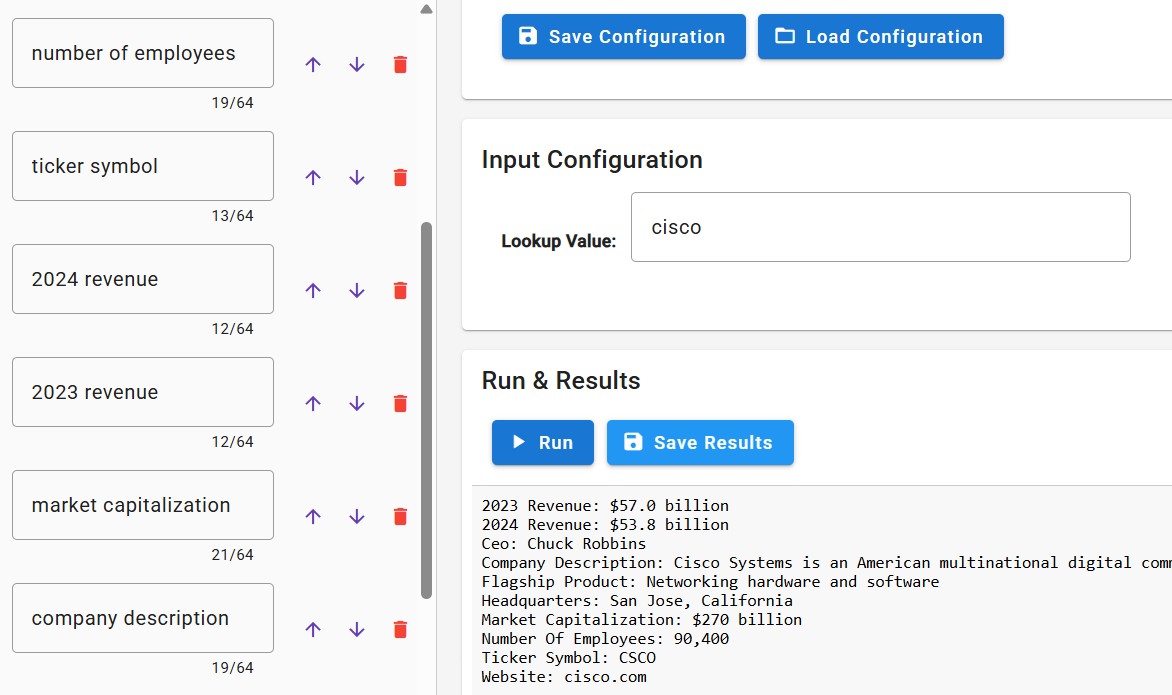A Close Look at Interzoid’s AI Models for the Interactive Data Client
Interzoid’s AI Interactive Data Client lets you request and retrieve structured data on any subject using multiple AI models, then instantly turn those results into an API call you can embed anywhere. This post takes a close look at the available models—what they’re best at, how they differ, and how to choose the right one for your use case.
Quick Links
The Model Lineup
All models return structured fields you define (e.g., city population, company headquarters, SKU, country GDP, etc.), tailored to your Topic description and sample Lookup value that you provide within the tool. Premium tiers layer in external knowledge bases and real‑time Web search for broader coverage and more recent detail.
model-a
Generalist BalancedReliable, efficient model for broad structured data retrieval. Great default choice to validate your output parameters and schema.
- Best for: General lookups, common entities, rapid iteration.
- Strength: Solid accuracy and coverage at a low credit cost.
- Tier: Standard (1 credit) with an optional model-a-premium for richer results.
model-x
Fast Category-sensitiveOptimized for speed; in many cases responds faster than the others while performing especially well on certain categories of data.
- Best for: High-volume runs, latency-sensitive workflows.
- Strength: Throughput and snappy responses.
- Tier: Standard (1 credit) plus model-x-premium option.
model-o
Reasoning ComprehensiveReasoning-oriented model for broad, nuanced subjects and complex, multi-field output definitions.
- Best for: Rich, multi-attribute records; deeper context.
- Strength: More comprehensive data adherence to your specifications.
- Tier: Standard (1 credit) plus premium tiers with increasing reasoning depth: premium‑nano, premium‑mini, and premium.
Premium Tiers Explained
Premium tiers augment results with external knowledge bases and real‑time Web search. Expect more comprehensive and current data with a trade‑off of higher credit usage and slightly longer runtimes. They’re ideal when standard models don’t surface enough depth or recency for your needs.
Credit Usage by Model
Credits are consumed per record generated (or per API call). Use standard models to prototype, then move up to premium for expanded coverage.
| Model | Credits / Record | Notes |
|---|---|---|
| model-a | 1 | Great default for most lookups |
| model-a-premium | 25 | Adds Web search & knowledge bases |
| model-o | 1 | Reasoning-oriented |
| model-o-premium-nano | 10 | Premium (entry) |
| model-o-premium-mini | 15 | Premium (mid) |
| model-o-premium | 25 | Premium (full) |
| model-x | 1 | Fastest in many cases |
| model-x-premium | 25 | Premium capabilities |
How to Choose the Right Model
- Just getting started? Try model-a with a small set of output parameters (3–5 fields). Validate your schema quickly.
- Need speed for many lookups? Use model-x, especially for batch runs.
- Need deeper reasoning or broader context? Use model-o (standard), then move up premium tiers if needed.
- Need fresher, more comprehensive results? Switch to a premium tier to leverage Web search & knowledge bases.
- Constrained on credits? Prototype with 1‑credit models, then reserve premium for the toughest cases.
Example Setup
Define output parameters, a Topic, and a Lookup—then click Run. Here’s a starter example you can paste into the client:
Output parameters: population, capital
city, official language, currency, gdp (usd)
Topic: Comprehensive information about world countries including demographics and economics
Lookup: "Japan"
Model: Start with model-a; if you need more current specificity, try model-a-premium.
From Query to API & Batch at Scale
- Instant API generation: After you retrieve results, the client produces an API call you can embed in apps, Websites, dashboards, ETL/ELT pipelines, or wherever real-time data enrichment delivers ROI.
- Batch processing: Apply your query to CSV/TSV files with batch.interzoid.com using Interzoid’s high‑performance, parallel cloud infrastructure.

Get Started
By selecting the right model—and premium tier when needed—you can turn natural‑language requests into live, structured data and operational APIs. Start with a 1‑credit model to validate your request and result configuration, then scale up to premium for the deepest, most recent and comprehensive results. The choice is yours—try it now.